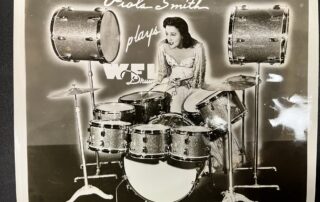In 1972, the University of Wisconsin-Madison hired Freida High Wasikhongo Tesfagiorgis as an assistant professor in the Department of Afro-American Studies to teach African-American art history. At the time, African-American art history was in its nascent form and proliferated into colleges thanks to the civil rights movement’s pressure prompting African-American Studies’ entrance into academia. For 41 years, High worked as a professor and artist devoted to expanding African-American art history’s canon.
High’s entrance to African-American art history began while she was an undergraduate at Northern Illinois University and took an art history course.
“And toward the end of the course, I asked my professor, ‘When will we get to the Black artists?’ And he said, ‘Oh, there are none.’” High said.
An artist herself, High turned her disbelief into an undergraduate independent study on African American artists. She immersed herself in Chicago’s AfriCOBRA art movement, which aimed to utilize visual art to develop a Black aesthetic and uplift Black communities. She took mentorship from Margaret Burroughs, the co-founder of the Chicago DuSable Museum of Art and early pioneer of African-American art history’s preservation.
After receiving her MFA from the University of Wisconsin-Madison, the Afro-American Studies Department hired her to teach and develop African-American art history courses. She was equipped with her research developed during undergrad and expanded discourse on African-American art throughout her tenure. For example, in the 1980s, she created Afrofemcentrism, an art history lens that centers on Black women artists, and changed the art world’s perception of African and African American women on a local and national level.
“When I started my teaching, I was the only person teaching with an afro, so there was a different kind of interaction between me and the young students too. By the time I left there many of the girls in the school in my class had afros as well.” High said.
High was adamant that students not only learn about the artists in the books they read but also have a chance to interact with the artists in their studios. High was known to rent buses to Milwaukee and Chicago and ensure that students could become immersed in each artist’s world at the artist’s respective studios.
When High wasn’t teaching, she made her own work.
“Being an artist and a professor, there is certainly that intersection, in which, in my case, what I study, what I teach, influences my creativity. And I’m making other ideas, you know, that raise questions about what I need to research and what I need to teach,” High remarked.
Now retired, High remains active with her art practice and scholarly work. In the back of her Madison home, she converted multiple rooms into her art studio. Woodcuts sit poignantly on a table next to a large canvas painting of High’s mother. Mountains of books stand like bricks against the wall, boasting titles pertaining to subjects like African art and feminism. Each step visitors take in her house, they feel like they are at a gallery, with High and her family’s art mounted to the wall, adorning the home with dynamic works.
“I am a Black woman, artist, mother, Professor Emeritus, curator, art, historian. I’m all of those things. So all of those things become a part of me,” High said, indicative of the world she’s created for herself that generously impacts the community at large through her scholarly and work’s continued relevance.










